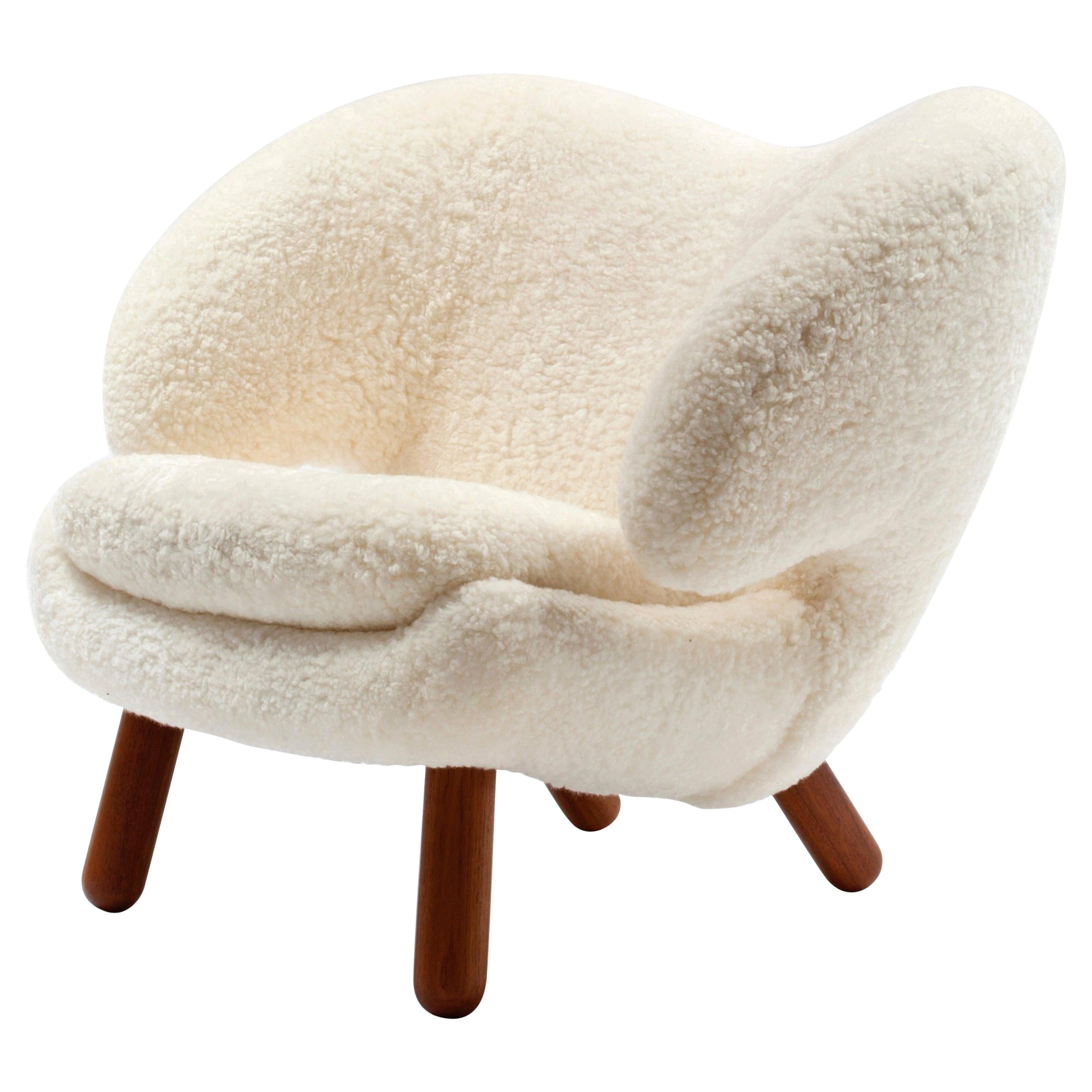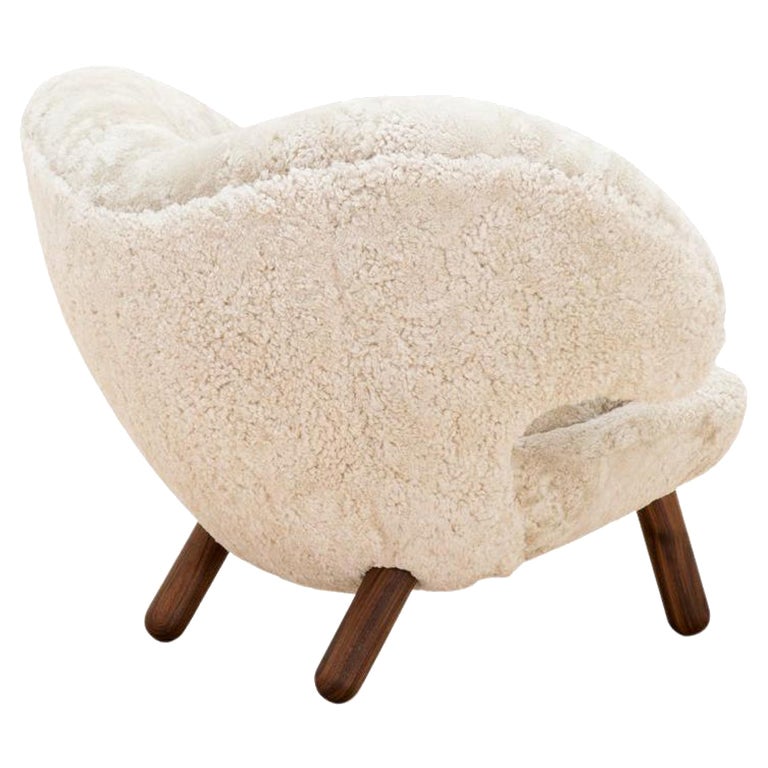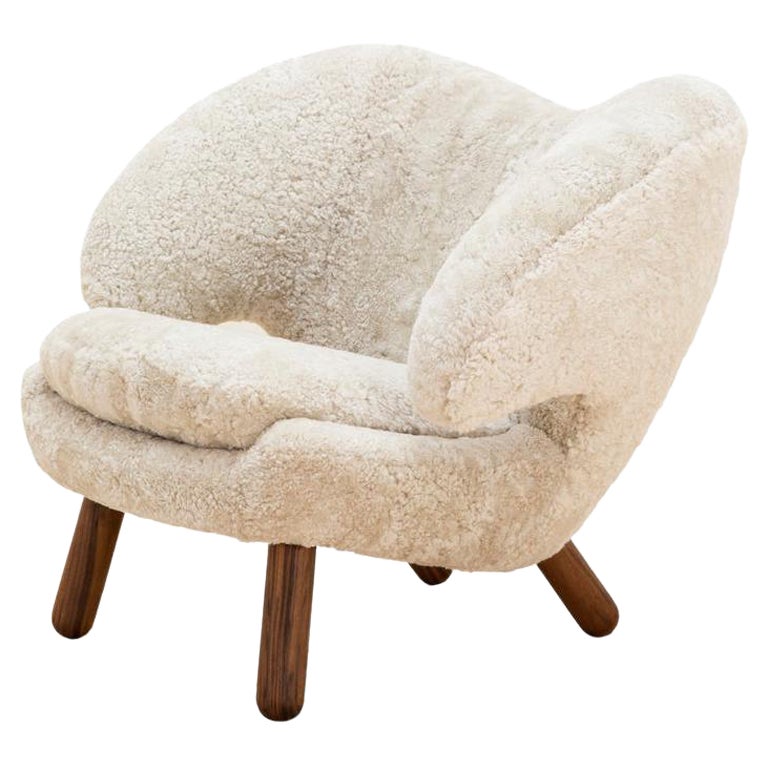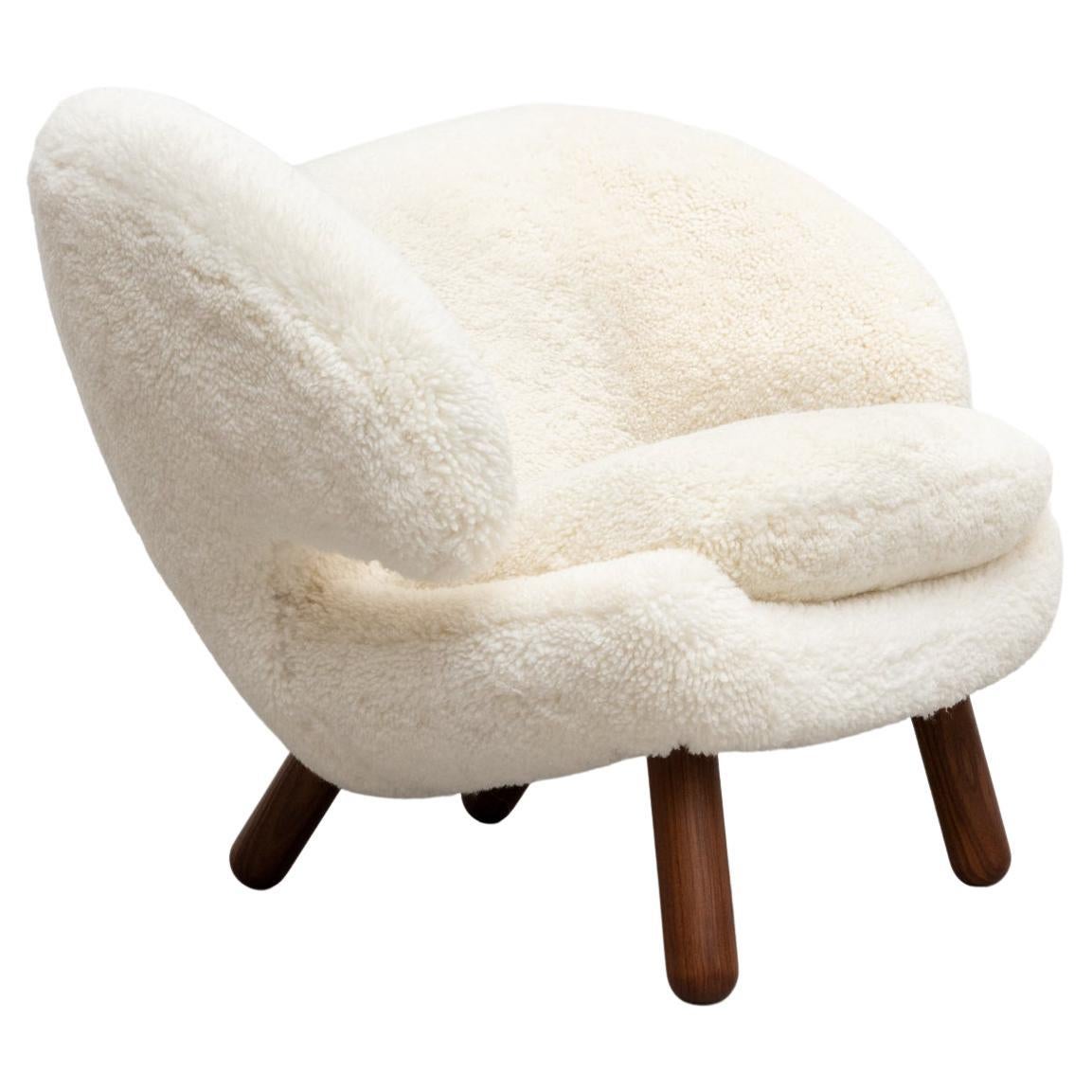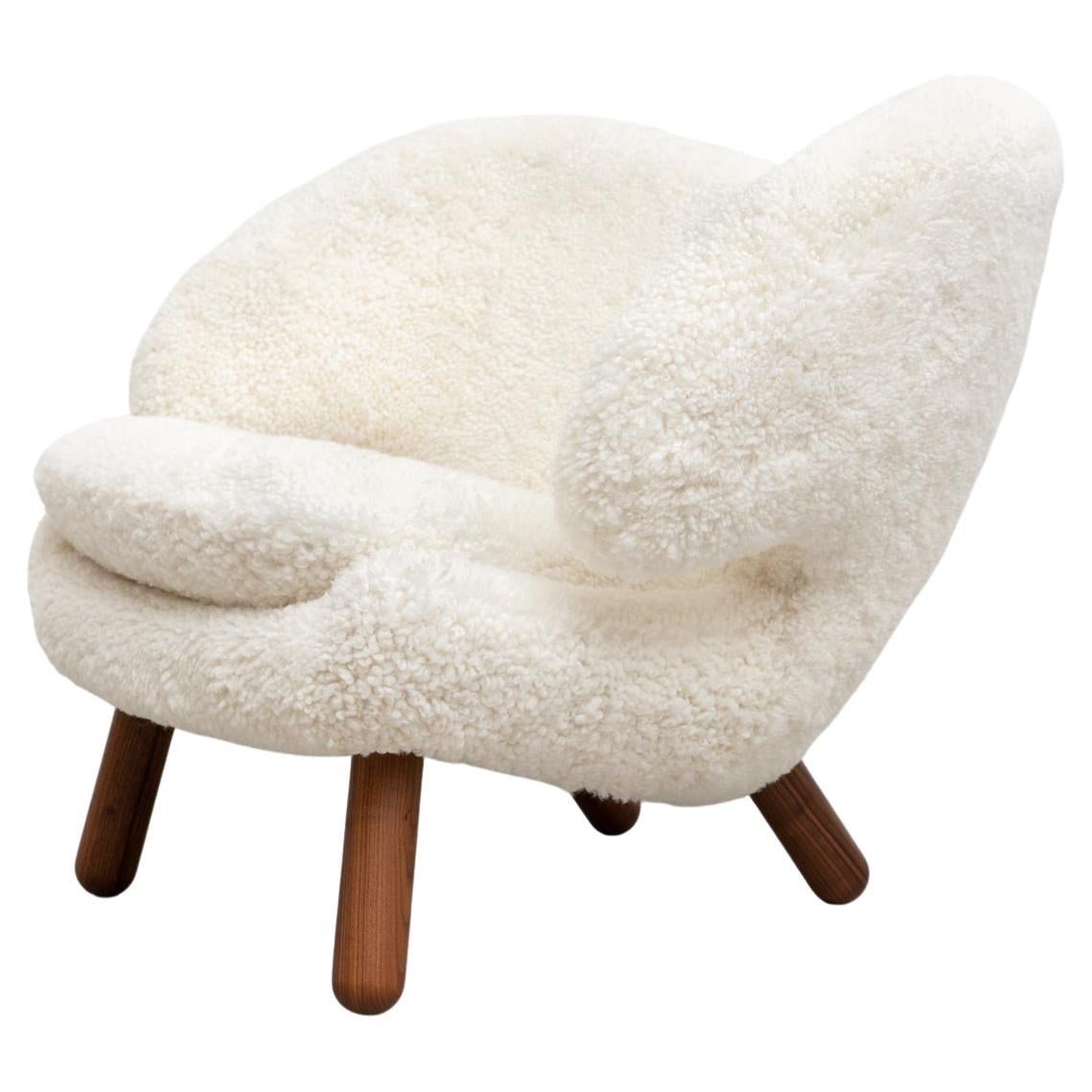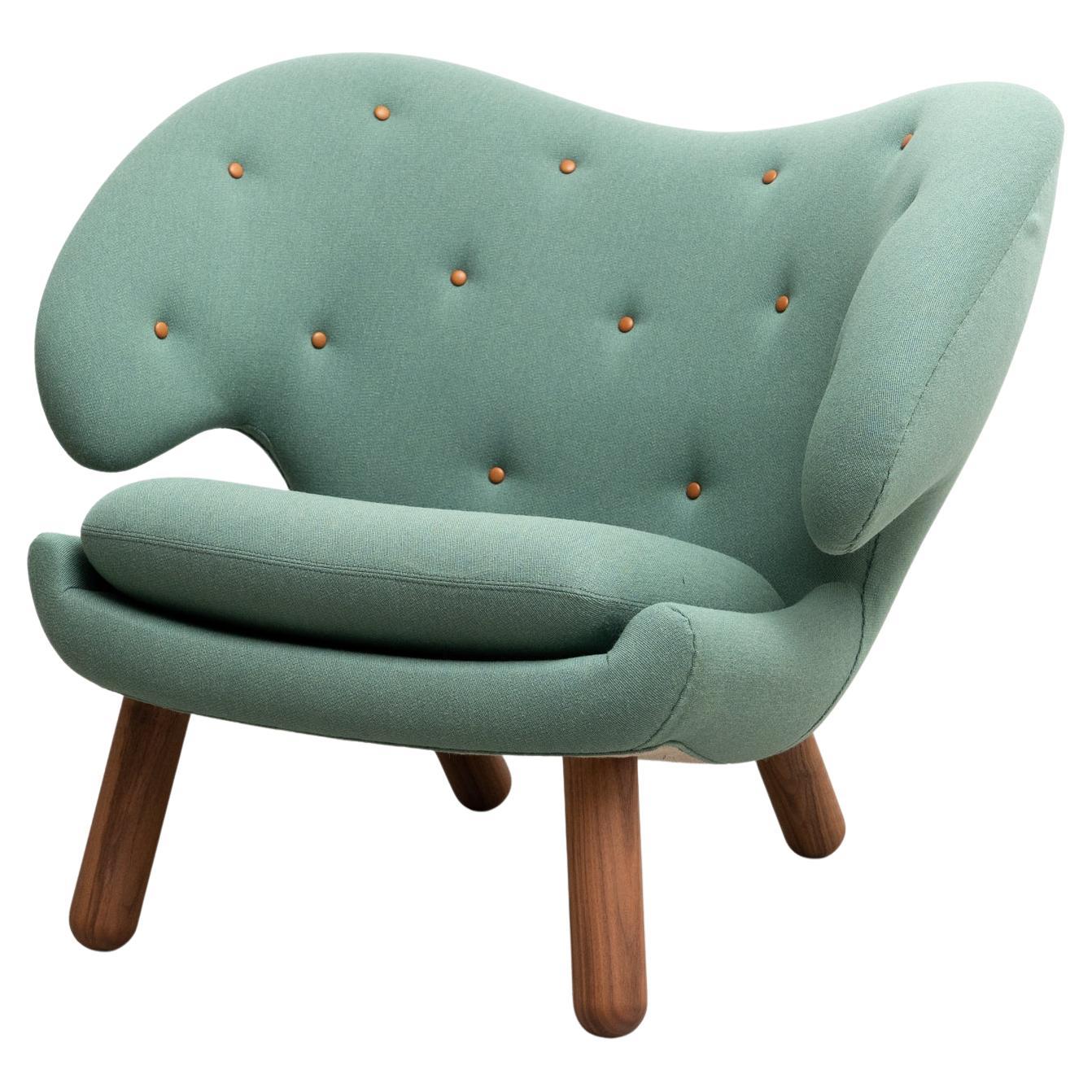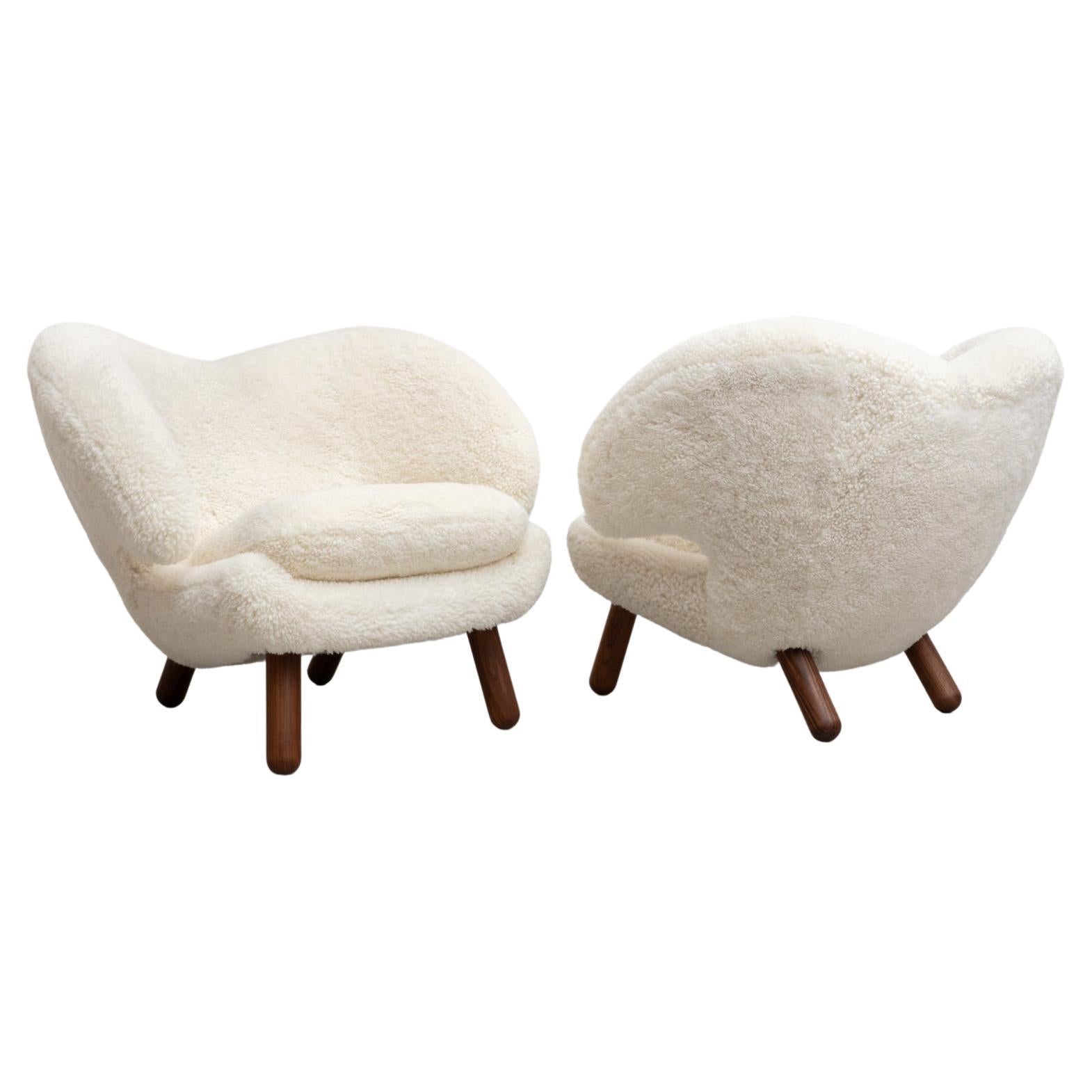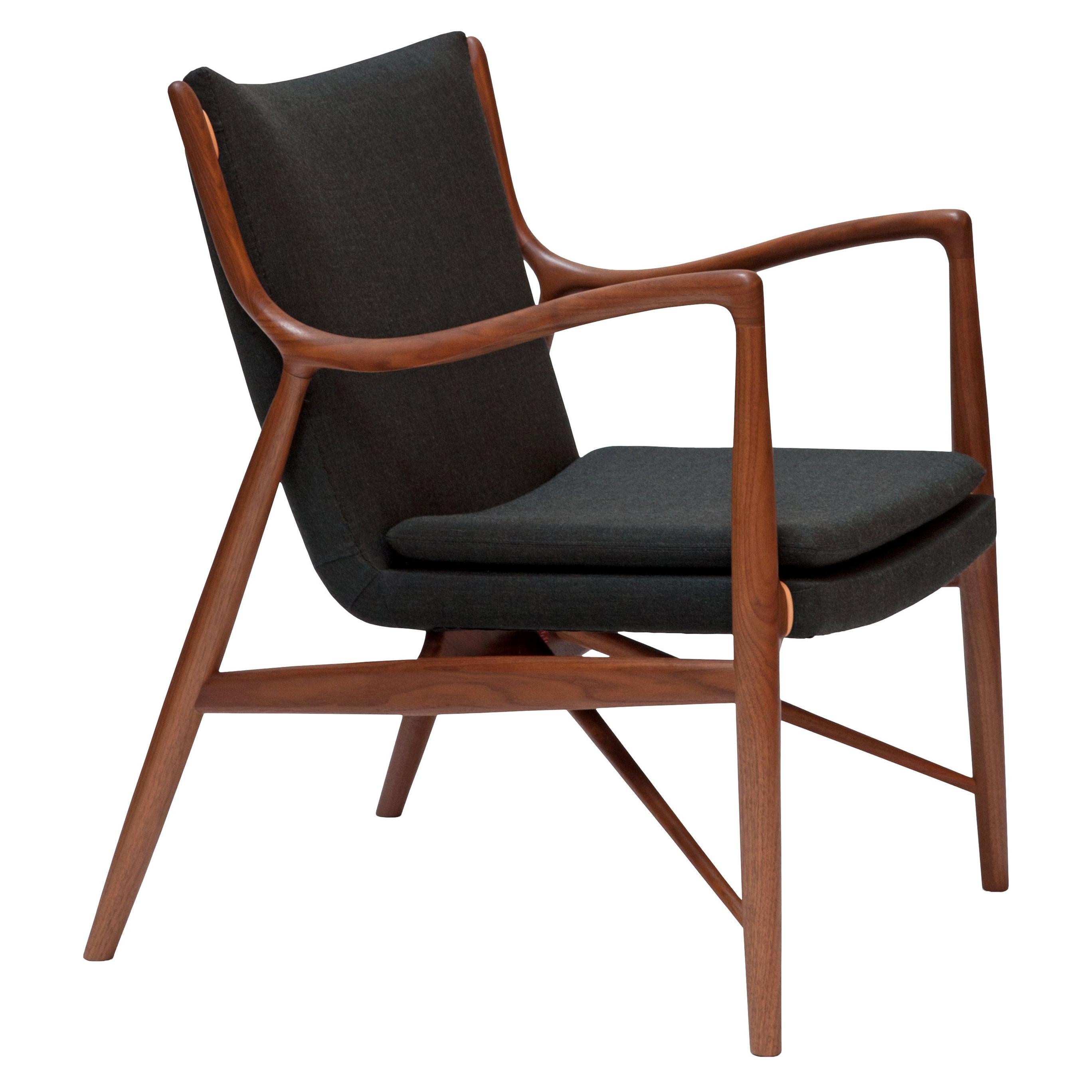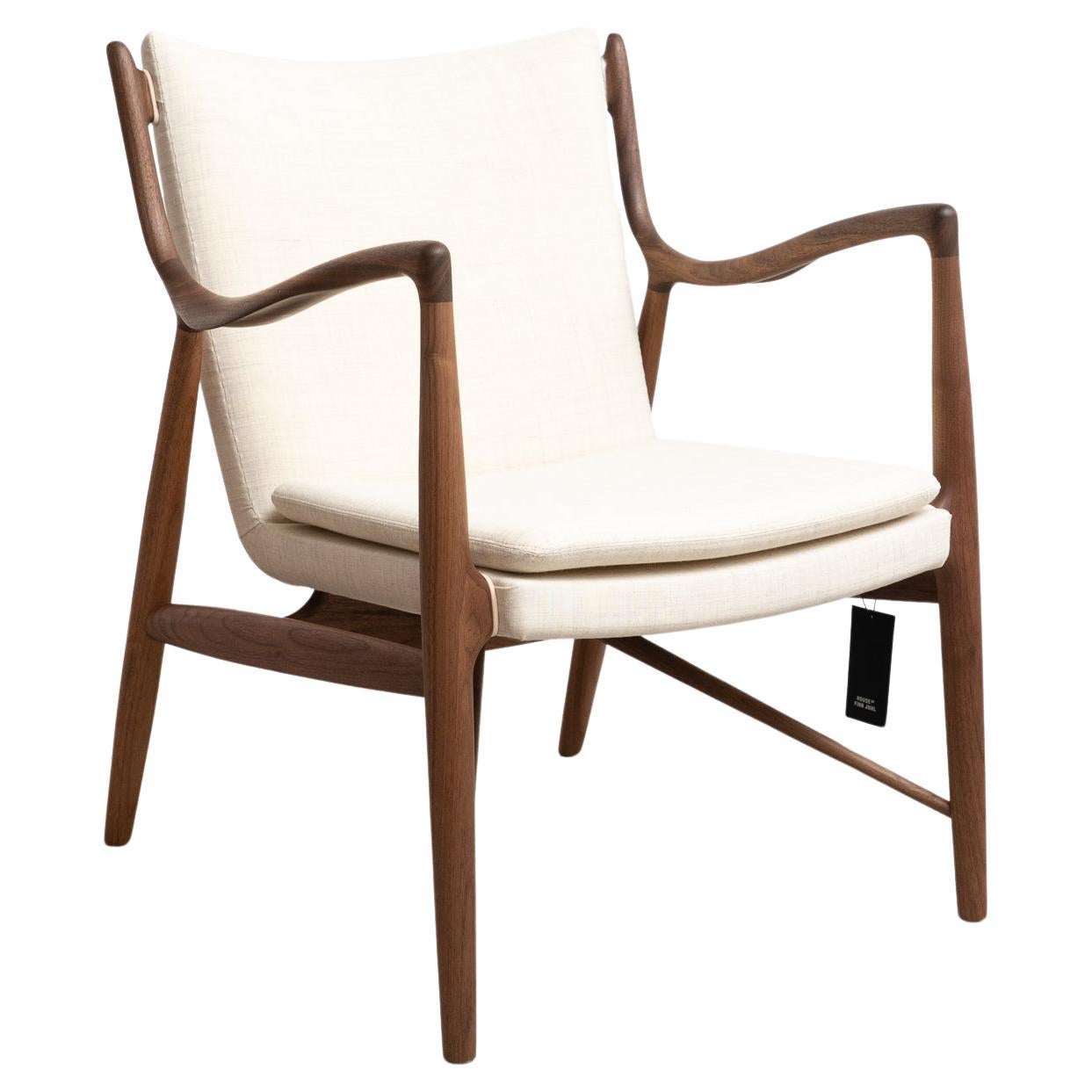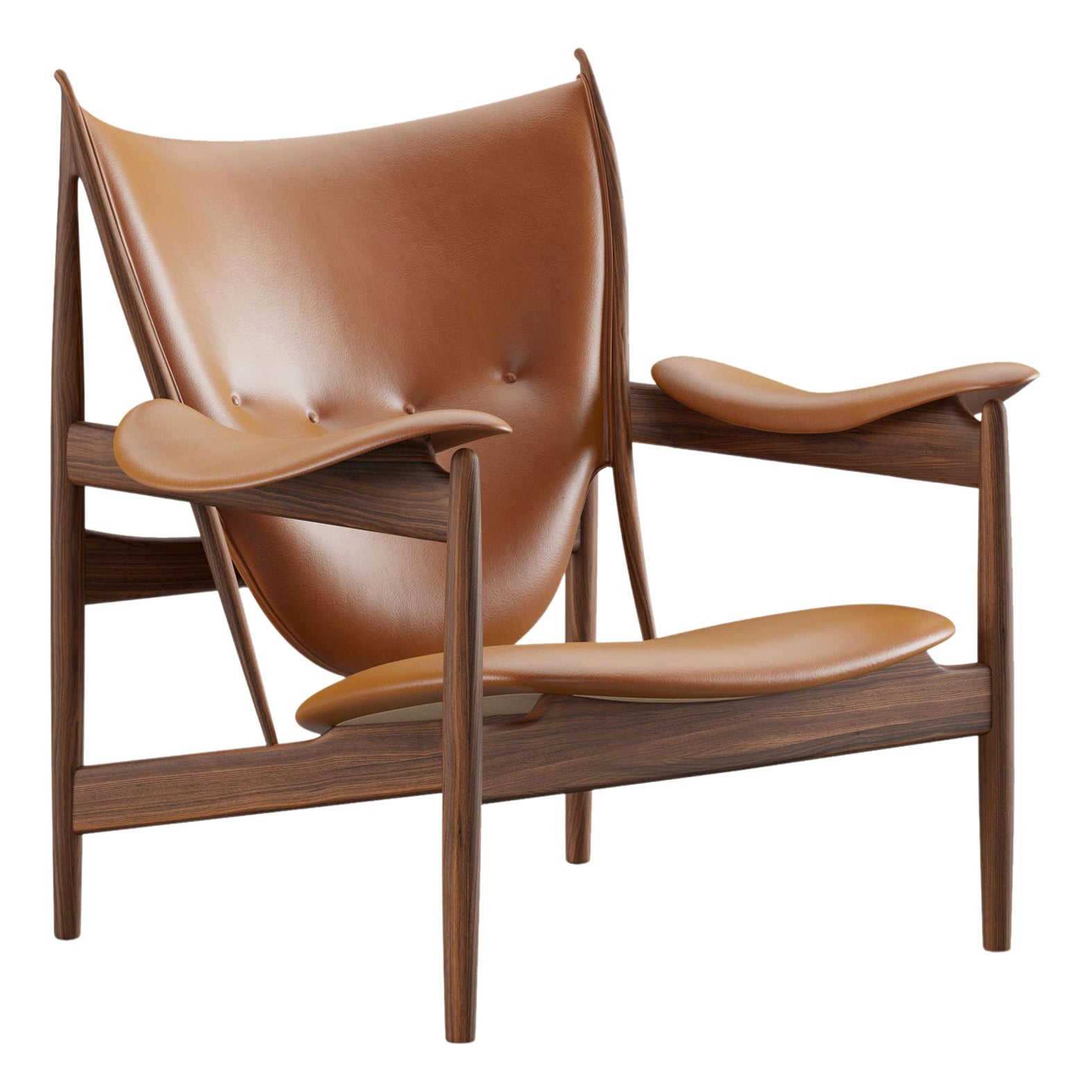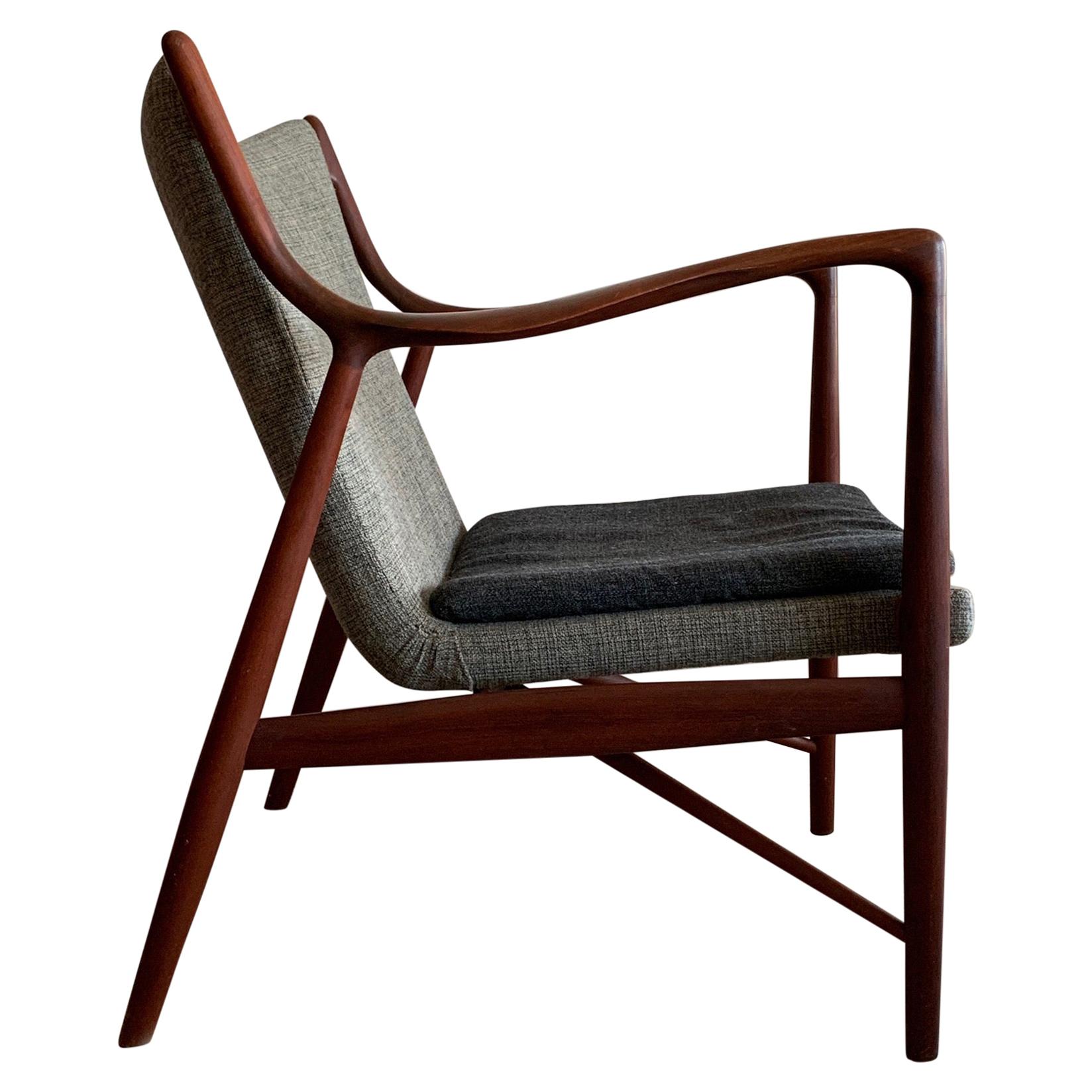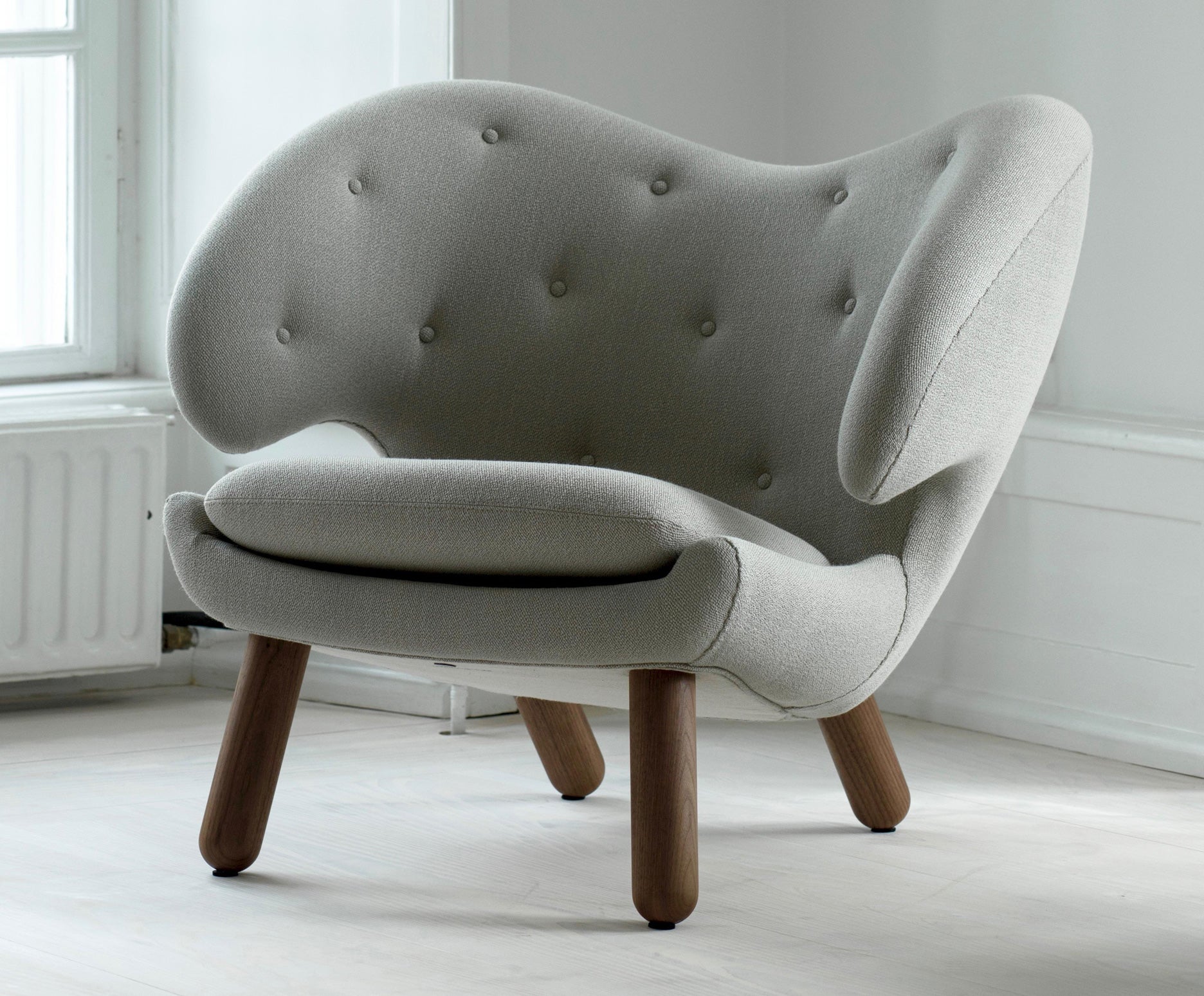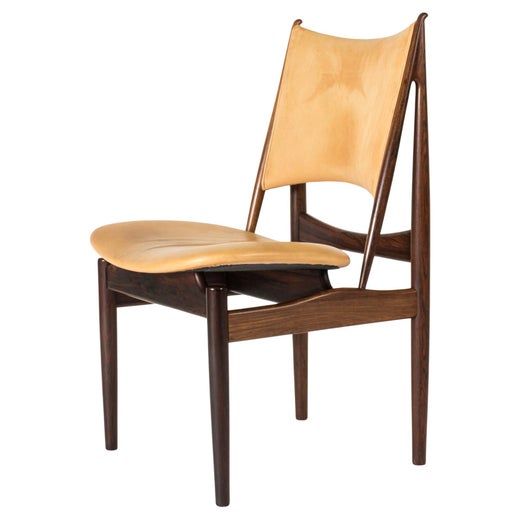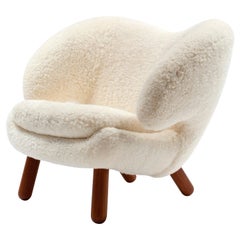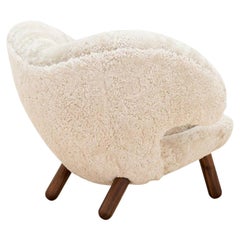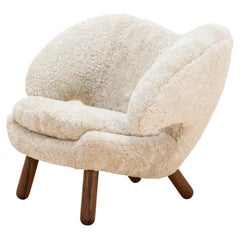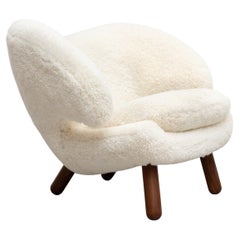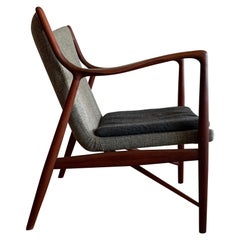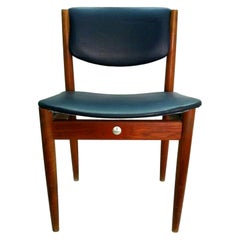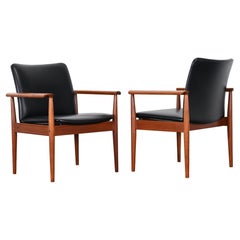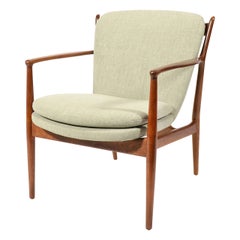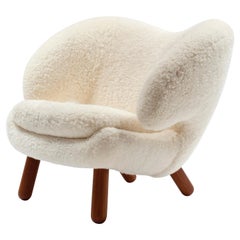
Finn Juhl Pelican Chair Skandilock Sheep Offwhite - Walnut
View Similar Items
Finn Juhl Pelican Chair Skandilock Sheep Offwhite - Walnut
About the Item
- Creator:Finn Juhl (Designer)
- Design:Pelican ChairPelican Series
- Dimensions:Height: 26.78 in (68 cm)Width: 33.47 in (85 cm)Depth: 29.93 in (76 cm)Seat Height: 14.57 in (37 cm)
- Style:Modern (In the Style Of)
- Materials and Techniques:
- Place of Origin:
- Period:
- Date of Manufacture:Contemporary
- Production Type:New & Custom(Current Production)
- Estimated Production Time:8-9 weeks
- Condition:Wear consistent with age and use.
- Seller Location:Barcelona, ES
- Reference Number:Seller: FJ.PELICAN.11stDibs: LU1427214567041
Pelican Chair
A seat ahead of its time, Finn Juhl's Pelican chair was the Danish designer’s first expressively sculptural piece — an influential and starkly unconventional example of Danish modern furniture.
Produced for the Danish Cabinetmakers’ Guild Exhibition in 1940, Juhl’s curved, tufted and padded Pelican is reflective of modern art influences, in particular, works by Dadaist sculptor Jean Arp. Its organic shape and stumpy pine legs drew mixed reactions, however, with one critic comparing it to a “tired walrus.” Although initially misunderstood, the Pelican chair embodied Juhl’s interest in merging practicality with sculpture. It was an artful shift from the large and chunky seating that was popular during the 1940s.
A regular visitor at Copenhagen's National Gallery as a teenager, Juhl (1912–89) initially had his sights set on becoming an art historian. His father pushed him into architecture, and the younger Juhl would spend the first decade of his career working for Vilhelm Lauritzen’s firm. Juhl mastered furniture design on his own and began to collaborate with cabinetmaker Niels Vodder in 1937. The two worked mostly with dark woods like rosewood and teak, producing popular designs such as 1949’s Chieftain chair as well as the Pelican.
One of his signature works, Juhl’s Pelican chair is also among his most venturesome. It references directly the deep interests he developed as a young man, studying primitive art, Arp’s works and Pablo Picasso. Relaunched by One Collection in 2001, the Pelican is still as wholly functional as Juhl intended — it’s comfortable enough to read in for hours — but marks the outer limits of his very broad design capabilities.
Finn Juhl
Along with Hans Wegner, Arne Jacobsen and Børge Mogensen, Finn Juhl was one of the great masters of mid-20th-century Danish design. Juhl was the first among that group to have his work promoted overseas, bringing the character of the nation’s furnishings — and the inherent principles of grace, craftsmanship and utility on which they were based — to an international audience.
A stylistic maverick, Juhl embraced expressive, free-flowing shapes in chair, credenzas and sofa designs much earlier than his colleagues, yet even his quietest pieces incorporate supple, curving forms that are at once elegant and ergonomic.
As a young man, Juhl hoped to become an art historian, but his father steered him into a more practical course of study in architecture. He began designing furniture in the late 1930s, a discipline in which, despite his education, Juhl was self-taught, and quite proud of the fact.
Juhl’s earliest works, designed in the late 1930s, are perhaps his most idiosyncratic. The influence of modern art is clear in his 1939 Pelican chair: an almost Surrealist take on the classic wing chair. Critics reviled the piece, however; one said it looked like a "tired walrus." Juhl had tempered his creativity by 1945, when the workshop of Danish cabinetmaker Niels Vodder began to issue his designs. Yet Juhl’s now-classic NV 45 armchair still demonstrates panache, with a seat that floats above the chair’s teak frame.
Juhl first exhibited his work in the United States in 1950, championed by Edgar Kaufmann Jr., an influential design critic and scion of America’s most prominent family of modern architecture and design patrons. (Kaufmann’s father commissioned Frank Lloyd Wright’s design of the house “Fallingwater.”)
Juhl quickly won a following for such signature designs as the supremely comfortable Chieftan lounge chair, the Judas table — a piece ornamented with stylish inlaid silver plaquettes — and the biomorphic Baker sofa. After an article authored by Kaufmann on Juhl and his work appeared in the U.S.-based magazine Interiors in 1948, he began receiving American commissions.
Kaufmann commissioned Juhl to create the exhibition design for, and contribute pieces to, the 1951 edition of the Good Design shows he organized for MoMA and Chicago’s Merchandise Mart. Baker Furniture asked Juhl to design for the firm, and he produced a collection of chairs, tables and cabinets, and, later, the 1957 sofa.
Scandinavian modernist seating, such as the chairs and sofas Juhl created for Baker, became immensely popular in postwar America, as the seeds of the Scandinavian style that Juhl sowed took root and spread in the United States. Juhl and his work featured prominently in the landmark show “Design from Scandinavia,” which opened in 1954 at the Virginia Museum of Fine Arts and traveled to 24 museums in the U.S. and Canada; over three years, it was seen by more than a million people.
Juhl’s furniture — as well as his ceramics, tableware and accessories — has an air of relaxed sophistication and elegance that is unique in the realm of mid-century design.
Find vintage Finn Juhl armchairs, coffee tables, desks and other furniture for sale on 1stDibs.
More From This Seller
View All2010s Danish Modern Armchairs
Sheepskin, Wood
2010s Danish Modern Armchairs
Sheepskin, Wood
2010s Danish Modern Armchairs
Sheepskin, Wood
2010s Danish Modern Armchairs
Wood, Sheepskin
2010s Danish Modern Armchairs
Wood
2010s Danish Modern Armchairs
Wood
You May Also Like
Vintage 1950s Danish Mid-Century Modern Armchairs
Teak
Vintage 1960s Danish Chairs
Faux Leather, Teak
Vintage 1960s Mid-Century Modern Chairs
Upholstery, Teak
Vintage 1950s American Scandinavian Modern Lounge Chairs
Teak, Upholstery
Vintage 1950s Danish Scandinavian Modern Armchairs
Fabric, Beech
Mid-20th Century Danish Mid-Century Modern Chairs
Leather, Wood
Recently Viewed
View AllRead More
What Makes Scandinavian Modernism and Nordic Design So Irresistible?
Andrew Duncanson, founder of the Stockholm- and London-based gallery Modernity, weighs in on the masters of mid-century furniture and decorative arts.
These Surreal and Sustainable Lamb Tables Are Based on a 1942 Dalí Painting
The artist envisioned them as part of a hay-strewn library.
